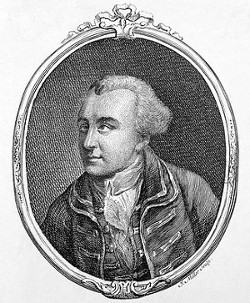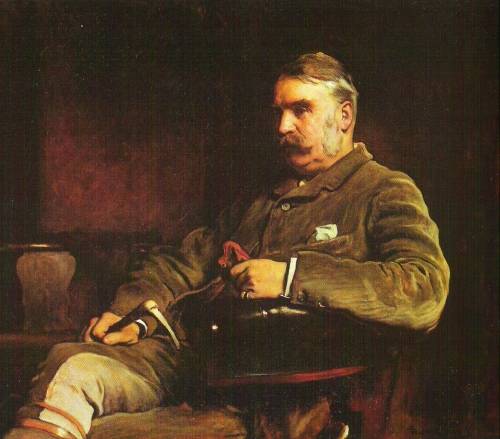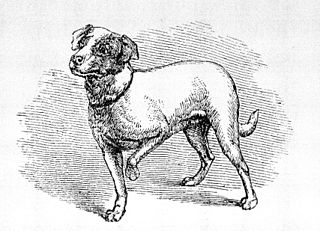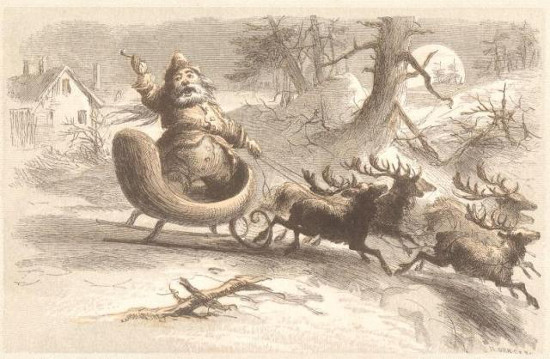
A foolish young man said to John Wilkes (1725-1797), “Isn’t it strange that I was born on the first of January?”
“Not strange at all,” said Wilkes. “You could only have been conceived on the first of April.”

A foolish young man said to John Wilkes (1725-1797), “Isn’t it strange that I was born on the first of January?”
“Not strange at all,” said Wilkes. “You could only have been conceived on the first of April.”
Howard Shapiro chose an unusual way to present his paper “Fluorescent Dyes for Differential Counts by Flow Cytometry” at the 1977 meeting of the Histochemical Society — he sang it:
Blood cells are classified by cell and nuclear shape and size
And texture, and affinity for different types of dyes,
And almost all of these parameters can quickly be
Precisely measured by techniques of flow cytometry.
It’s hard to fix a cell suspension rapidly and stain
With several fluorochromes, and this procedure, while it plain-
Ly furnishes the data which one needs to classify,
May fade away, and newer, simpler, methods never dye. …
The full paper, 76 verses with figures and sheet music, is here.

In 1982, MIT physicist A.P. French received this letter from a writer in New Rochelle, N.Y.:
Being a safety minded individual I thought I would write you before experimenting on my own. Is it safe to mix Antipasto and Pasta together and could this be a future energy supply?
He responded:
I believe that your thoughtful and interesting suggestion about the mixing of pasta and antipasto deserves some acknowledgment. This process might well be a significant energy source — but only, I think, intragastrically. I estimate that the digestion of 1 lb of the mixture would release energy equivalent to about 0.001 megawatt hours or 0.000001 kilotons of TNT. I would not foresee any unusual hazards.
(From Robert L. Weber, ed., Science With a Smile, 1992.)

perstringe
v. to criticize
dispendious
adj. costly
connictation
n. a twinkling or winking with the eye
An example of the quick wit of W.S. Gilbert, from actor Rutland Barrington’s 1908 memoir:
“On one occasion, when rehearsing Pinafore, he said, ‘Cross left on that speech, I think, Barrington, and sit on the skylight over the saloon pensively.’ I did so, but the stage carpenter had only sewn the thing together with packthread, and when I sat on it it collapsed entirely, whereupon he said like lightning, ‘That’s expensively!'”

In walking through a park and observing the signs, ‘All dogs found on these grounds without their owners, will be shot,’ a friend of mine exclaimed, ‘That’s a hard case for dogs that can’t read.’
— Irving Browne, Humorous Phases of the Law, 1876
Two mathematicians were having dinner. One was complaining: ‘The average person is a mathematical idiot. People cannot do arithmetic correctly, cannot balance a checkbook, cannot calculate a tip, cannot do percents, …’ The other mathematician disagreed: ‘You’re exaggerating. People know all the math they need to know.’
Later in the dinner the complainer went to the men’s room. The other mathematician beckoned the waitress to his table and said, ‘The next time you come past our table, I am going to stop you and ask you a question. No matter what I say, I want you to answer by saying “x squared.”‘ She agreed. When the other mathematician returned, his companion said, ‘I’m tired of your complaining. I’m going to stop the next person who passes our table and ask him or her an elementary calculus question, and I bet the person can solve it.’ Soon the waitress came by and he asked: ‘Excuse me, Miss, but can you tell me what the integral of 2x with respect to x is?’ The waitress replied: ‘x squared.’ The mathematician said, ‘See!’ His friend said, ‘Oh … I guess you were right.’ And the waitress said, ‘Plus a constant.’
— Michael Stueben, Twenty Years Before the Blackboard, 1998

‘Twas the nocturnal segment of the diurnal period preceding the annual Yuletide celebration, and throughout our place of residence, kinetic activity was not in evidence among possessors of this potential, including that species of domestic rodent knows as Mus musculus.
Hosiery was meticulously suspended from the forward edge of the wood-burning caloric apparatus, pursuant to our anticipatory pleasure regarding an imminent visitation from an eccentric philanthropist among whose folkloric appellations is the honorific title of St. Nicholas.
The prepubescent siblings, comfortably ensconced in their respective accommodations of repose, were experiencing subconscious visual hallucinations of variegated fruit confections moving rhythmically through their cerebrums.
My conjugal partner and I, attired in our nocturnal head coverings, were about to take slumbrous advantage of the hibernal darkness when upon the avenaceous exterior portion of the grounds there ascended such a cacophony of dissonance that I felt compelled to arise with alacrity from my place of repose for the purpose of ascertaining the precise source thereof.
Hastening to the casement, I forthwith opened the barriers sealing this fenestration, noting thereupon that the lunar brilliance without, reflected as it was on the surface of a recent crystalline precipitation, might be said to rival that of the solar meridian itself — thus permitting my incredulous optical sensory organs to behold a miniature airborne runnered conveyance drawn by eight diminutive specimens of the genus Rangifer, piloted by a minuscule aged chauffer so ebullient and nimble that it became instantly apparent to me that he was indeed our anticipated caller.
With his ungulate motive power travelling at what may possibly have been more vertiginous velocity than patriotic alar predators, he vociferated loudly, expelled breath musically through contracted labia, and addressed each of the octet by his or her respective cognomen — “Now Dasher, now Dancer …” et al. — guiding them to the uppermost exterior level of our abode, through which structure I could readily distinguish the concatenations of each of the 32 cloven pedal extremities.
As I retracted my cranium from its erstwhile location, and was performing a 180-degree pivot, our distinguished visitant achieved — with utmost celerity and via a downward leap — entry by way of the smoke passage.
He was clad entirely in animal pelts soiled by the ebony residue from the oxidations of carboniferous fuels which had accumulated on the walls thereof. His resemblance to a street vendor I attributed largely to the plethora of assorted playthings which he bore dorsally in a commodious cloth receptacle.
His orbs were scintillant with reflected luminosity, while his submaxillary dermal indentations gave every evidence of engaging amiability. The capillaries of his malar regions and nasal appurtenance were engorged with blood that suffused the subcutaneous layers, the former approximating the coloration of Albion’s floral emblem, the latter that of the Prunus avium, or sweet cherry.
His amusing sub- and supralabials resembled nothing so much as a common loop knot, and their ambient hirsute facial adornment appeared like small tabular and columnar crystals of frozen water. Clenched firmly between his incisors was a smoking piece whose gray fumes, forming a tenuous ellipse about his occiput, were suggestive of a decorative seasonal circlet of holly. His visage was wider than it was high, and when he waxed audibly mirthful, his corpulent abdominal region undulated in the manner of impectinated fruit syrup in a hemispherical container.
He was, in short, neither more nor less than an obese, jocund, superannuated gnome, the optical perception of whom rendered me visibly frolicsome despite every effort to refrain from so being.
By rapidly lowering and then raising one eyelid and rotating his head slightly to one side, he indicated that trepidation on my part was groundless. Without utterance and with dispatch, he commenced filling the aforementioned appended hosiery with various articles of merchandise extracted from a dorsally transported cloth receptacle. Upon completion of this task, he executed an abrupt about-face, placed a single manual digit in lateral juxtaposition to his olfactory organ, inclined his cranium forward in a gesture of leave-taking, and forthwith affected his egress by renegotiating (in reverse) the smoke passage.
He then propelled himself in a short vector onto his conveyance, directed a musical expulsion of air through his contracted oral sphincter to the antlered quadrupeds of burden, and proceeded to soar aloft in a movement hitherto observable chiefly among the seed-bearing portions of a common weed. But I overheard his parting exclamation, audible immediately prior to his vehiculation beyond the limits of visibility: “Ecstatic yuletide to the plenary constituency, and to that selfsame assemblage, my sincerest wishes for a salubriously beneficial and gratifyingly pleasurable period between sunset and dawn!”
(Author unknown)
“A tomahawk is what if you go to sleep and suddenly wake up without your hair, there is an Indian with.”
— University of Texas El Burro, 1969, from A Century of College Humor
What’s unusual about this limerick?
There was a young lady of Riga,
Who went for a ride on a tiger,
They came back from their ride
With the lady inside
And a smile on the face of the tiger.
It remains a limerick when translated into Latin:
Puella Rigensis ridebat,
Quam tigris in tergo vehebat,
Externa profecta
Interna revecta,
Risusque cum tigre manebat.
Ronald Knox found that the same is true of this one:
There was a young man of Devizes,
Whose ears were of different sizes;
The one that was small
Was no use at all,
But the other won several prizes.
Visas erat; huic geminarum
Dispar modus auricularum:
Minor haec nihili;
Palma triplici
Iam fecerat altera clarum.
Peculiarly English limericks:
There was a young lady named Wemyss,
Who, it semyss, was troubled with dremyss.
She would wake in the night,
And, in terrible fright,
Shake the bemyss of the house with her scremyss.
A pretty school-mistress named Beauchamp,
Said, “These awful boys, how shall I teauchamp?
For they will not behave,
Although I look grave
And with tears in my eyes I beseauchamp.”
There was a professor of Caius
Who measured six feet round the knaius;
He went down to Harwich
Nineteen in a carwich,
And found it a terrible squaius.
There lived a young lady named Geoghegan,
The name is apparently Peoghegan,
She’ll be changing it solquhoun
For that of Colquhoun,
But the date is at present a veoghegan. (W.S. Webb)
An author, by name Gilbert St. John,
Remarked to me once, “Honest t. John,
You really can’t quote
That story I wrote:
My copyright you are infrt. John.” (P.L. Mannock)
See This Sceptred Isle.